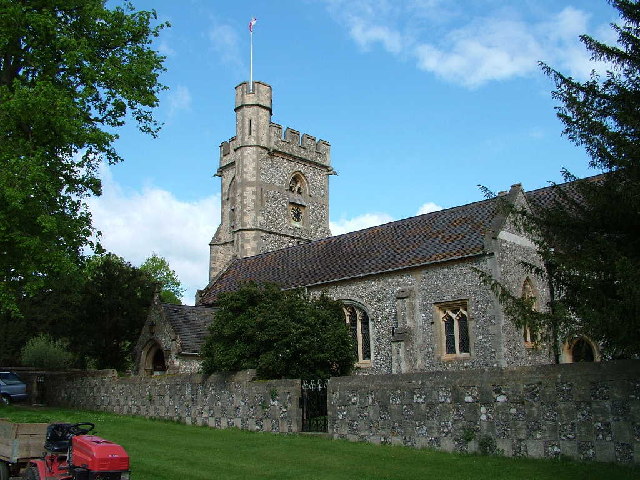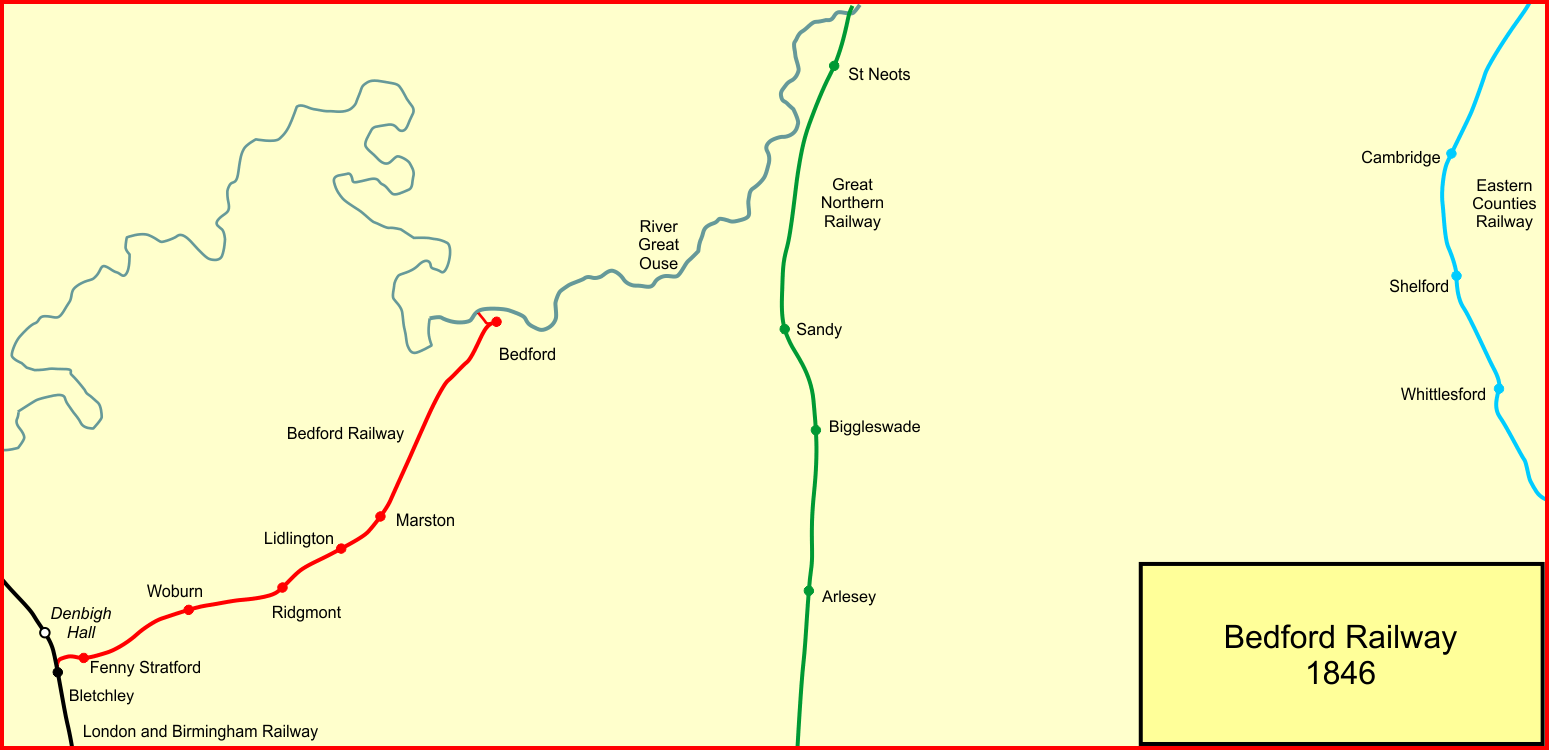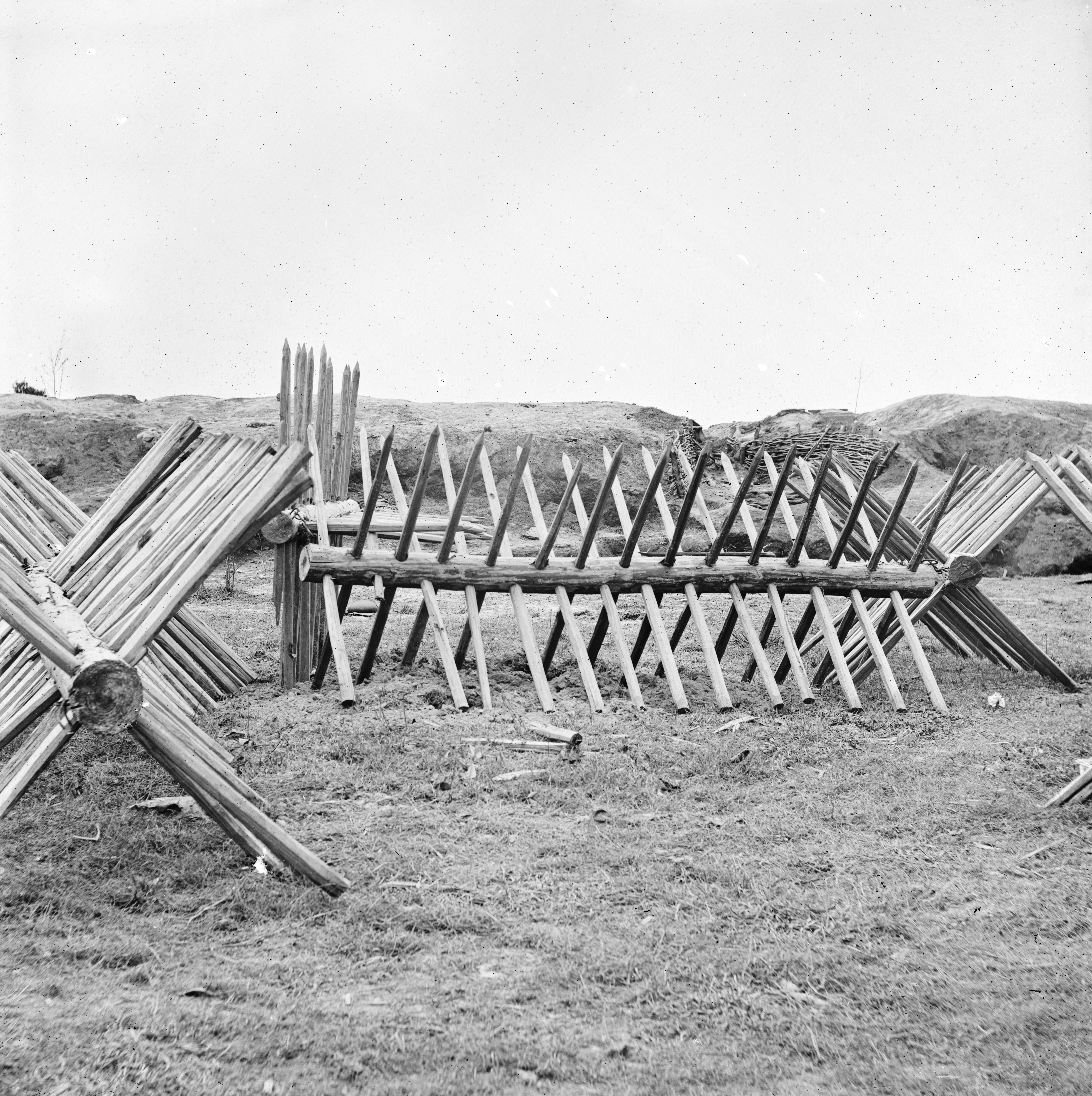|
Woburn, Bedfordshire
Woburn (, meaning twisted or crooked stream) is a village and civil parishes in England, civil parish in Bedfordshire, England, about southeast of Milton Keynes and south of junction 13 of the M1 motorway. At the 2011 census, it had a population of 933. History Woburn was first recorded as a hamlet in 969 and is listed in the Domesday Book of 1086. It is best known as the location of Woburn Abbey (a stately home) and Woburn Safari Park. The abbey was founded by Cistercian monks in 1145 and granted to the first Earl of Bedford in 1538 after the dissolution of the monasteries. The town may have been called "Woburne Chapell" in medieval times, in order to distinguish it from the abbey. Woburn has been burned down and rebuilt three times. A medieval chimney fire spread owing to the prevalence of thatched roofs and closely built houses. Then, during the English Civil War, the Cavaliers burned down much of the town and in 1724 a third fire destroyed much of the town, which was rebu ... [...More Info...] [...Related Items...] OR: [Wikipedia] [Google] [Baidu] |
Central Bedfordshire
Central Bedfordshire is a Districts of England, local government district in the ceremonial county of Bedfordshire, England. It is administered by Central Bedfordshire Council, a Unitary authorities of England, unitary authority. It was created in 2009. Formation Central Bedfordshire was created on 1 April 2009 as part of a structural reform of local government in Bedfordshire. The Bedfordshire County Council and all the district councils in the county were abolished, with new unitary authorities created providing the services which had been previously delivered by both the district and county councils. Central Bedfordshire was created covering the area of the former Mid Bedfordshire (district), Mid Bedfordshire and South Bedfordshire Districts. The local authority is called Central Bedfordshire Council. Parliamentary representation Following the 2023 Periodic Review of Westminster constituencies, Central Bedfordshire would be split between five Constituencies of the Parliamen ... [...More Info...] [...Related Items...] OR: [Wikipedia] [Google] [Baidu] |
Cavaliers
The term ''Cavalier'' () was first used by Roundheads as a term of abuse for the wealthier royalist supporters of Charles I of England and his son Charles II of England, Charles II during the English Civil War, the Interregnum (England), Interregnum, and the Restoration (England), Restoration (1642 – ). It was later adopted by the Royalists themselves. Although it referred originally to political and social attitudes and behaviour, of which clothing was a very small part, it has subsequently become strongly identified with the fashionable clothing of the court at the time. Prince Rupert of the Rhine, Prince Rupert, commander of much of Charles I's cavalry, is often considered to be an archetypal Cavalier. Etymology ''Cavalier'' derives from the same Latin root as the Italian word , the French word , and the Spanish word , the Vulgar Latin word ''wikt:caballarius, caballarius'', meaning 'horseman'. Shakespeare used the word ''cavaleros'' to describe an overbearing swashbuckl ... [...More Info...] [...Related Items...] OR: [Wikipedia] [Google] [Baidu] |
John Murray (publishing House)
John Murray is a Scottish publisher, known for the authors it has published in its long history including Jane Austen, Arthur Conan Doyle, Lord Byron, Charles Lyell, Johann Wolfgang von Goethe, Herman Melville, Edward Whymper, Thomas Robert Malthus, David Ricardo, and Charles Darwin. Since 2004, it has been owned by conglomerate Lagardère Group, Lagardère under the Hachette Livre, Hachette UK brand. History The business was founded in London, England, in 1768 by John Murray (1737–1793), an Edinburgh-born Royal Marines officer, who built up a list of authors including Isaac D'Israeli and published the ''English Review (18th century), English Review''. John Murray the elder was one of the founding sponsors of the London evening newspaper ''The Star (1788), The Star'' in 1788. He was succeeded by his son John Murray II, who made the publishing house important and influential. He was a friend of many leading writers of the day and launched the ''Quarterly Review'' in 180 ... [...More Info...] [...Related Items...] OR: [Wikipedia] [Google] [Baidu] |
Woburn Cottage Hospital
Woburn Cottage Hospital was a hospital in Woburn, Bedfordshire, England. History Mary, the Duchess of Bedford (1865–1937) developed an interest in nursing whilst at school in Cheltenham, and in 1898 opened a cottage hospital at Woburn, the Bedford family country estate. Although the Duchess attended ‘a course of lectures at the London Hospital’ as part of her preparation to run the hospital, she does not appear to have undertaken formal training whilst there.Rogers, Sarah (2022). 'A Maker of Matrons'? A study of Eva Lückes's influence on a generation of nurse leaders:1880–1919' (Unpublished PhD thesis, University of Huddersfield, April 2022) During the Duchess's attendance at The London Hospital The Royal London Hospital is a large teaching hospital in Whitechapel in the London Borough of Tower Hamlets. It is part of Barts Health NHS Trust. It provides district general hospital services for the City of London and Tower Hamlets and spe ... she got to know Sydney ... [...More Info...] [...Related Items...] OR: [Wikipedia] [Google] [Baidu] |
St Michael's, Chenies
St Michael's Church at Chenies, Buckinghamshire, is a Grade I listed Anglican parish church in the Diocese of Oxford in England. It is not of great architectural interest but stands in an attractive position in the Chess Valley near the Chenies Manor House. The church is famous for its Bedford Chapelphoto, the mausoleum of the Russell family ( Dukes of Bedford of Woburn Abbey) which is private and not open to the public.The Bedford Chapel owww.cheniesbenefice.org accessed 26 July 2015 Parish church History The present parish church mainly dates from the late 15th and early 16th centuries, replacing an earlier, mainly wooden church dating from the 12th century.St Michael's, Chenies owww.cheniesmanorhouse.co.uk accessed 26 July 2015 The first church on this site and dedicated to St. Michael is believed to have been built in the latter part of the 12th century by ''Alexander de Isenhampstead''. "Isenhampstead" was the original name of the village that later came to be known as "I ... [...More Info...] [...Related Items...] OR: [Wikipedia] [Google] [Baidu] |
William Russell, 8th Duke Of Bedford
William Russell, 8th Duke of Bedford (1 July 1809 – 27 May 1872) styled Marquess of Tavistock from 1839 to 1861, was a British Whigs (British political party), Whig politician. He was the son of Francis Russell, 7th Duke of Bedford and his wife Anna Maria Stanhope, Duchess of Bedford, Anna Maria Stanhope. Russell was educated at Eton College and Christ Church, Oxford and was Member of Parliament (United Kingdom), member of parliament (MP) for Tavistock (UK Parliament constituency), Tavistock (which had been represented by members of the Russell family intermittently since 1640) from 1832 to 1841. He died in 1872, aged 62, unmarried and childless and was buried in the 'Bedford Chapel' at St Michael's, Chenies, St. Michael's Church, Chenies, Buckinghamshire. His titles passed to his cousin, Francis Russell, 9th Duke of Bedford, Francis Hastings Russell, 9th Duke of Bedford. References * * External links * 1809 births 1872 deaths Dukes of Bedford, 408 Mem ... [...More Info...] [...Related Items...] OR: [Wikipedia] [Google] [Baidu] |
Edward Blore
Edward Blore (13 September 1787 – 4 September 1879) was a 19th-century English landscape and architectural artist, architect and antiquary. Early career Blore was born in Derby, the son of the antiquarian writer Thomas Blore. Blore's background was in antiquarian draughtsmanship rather than architecture, in which he had no formal training. Nevertheless, he designed Vorontsov Palace (Alupka), a large palace for Prince Mikhail Semyonovich Vorontsov in Alupka, Crimea, and important ecclesiastical furnishings designed by him included organ cases for Winchester Cathedral and Peterborough Cathedral (the Peterborough case since removed) and the choir stalls in Westminster Abbey. Charles Locke Eastlake, writing in 1872, believed that he had been apprenticed to an engraver,Eastlake 1873, p.138 but other sources dispute this. He illustrated his father's ''History of Rutland'' (1811), and over the next few years he made the drawings of York Minster and Peterborough Cathedral and measu ... [...More Info...] [...Related Items...] OR: [Wikipedia] [Google] [Baidu] |
Woburn Town Hall
Woburn Town Hall is a municipal building in the Market Place, Woburn, Bedfordshire, England. The town hall, which has largely been converted for retail use, is a Grade II listed building. History The first municipal building in Woburn was a three-storey market hall commissioned by the John Russell, 4th Duke of Bedford and completed in 1737. The ground floor was used as a shambles i.e. a meat market. On each side there was a Doric order peristyle and at roof level there was a cupola and a weather vane. By the early 19th century the building was dilapidated and John Russell, 6th Duke of Bedford decided to demolish it and to replace it with a new structure on the same site. The new building was designed by Edward Blore in the Jacobethan style, built in brown brick with ashlar stone dressings and was completed in 1830. The design involved a broadly symmetrical main frontage with a single bay facing northeast onto the High Street; there was a doorway with an archivolt on the ground ... [...More Info...] [...Related Items...] OR: [Wikipedia] [Google] [Baidu] |
Varsity Line
The Varsity Line was the main railway line that linked the English university cities of Oxford and Cambridge, operated by the London and North Western Railway. In World War II, the line became a strategic route for freight avoiding London, and additional connections were made to nearby lines to improve it, but it was not greatly used for its intended purpose. After the war, the line was again scheduled to be developed as a strategic route, but that scheme was never fully implemented either. Passenger services were withdrawn from most of the line on 1 January 1968, and only the Bletchley–Bedford section remained open for passenger traffic. In 1987, the section between Oxford and Bicester was reopened, followed in 2015 by a connection to the Chiltern Main Line at Bicester, enabling Chiltern Railways to operate an Oxford to London passenger service. There are funded plans for the entire line to be re-established by the mid-2020s, partly on a new route and under a new name Ea ... [...More Info...] [...Related Items...] OR: [Wikipedia] [Google] [Baidu] |
Grand Union Canal
The Grand Union Canal in England is part of the Canals of the United Kingdom, British canal system. It is the principal navigable waterway between London and the Midlands. Starting in London, one arm runs to Leicester and another to Birmingham. The Birmingham canal is with 166 Canal lock, locks. The Birmingham line has a number of short branches to places including Slough, Aylesbury, Wendover, and Northampton. The Leicester line has two short arms of its own, to Market Harborough and Welford, Northamptonshire, Welford. It has links with other canals and navigable waterways, including the River Thames, the Regent's Canal, the River Nene and River Soar, the Oxford Canal, the Stratford-upon-Avon Canal, the Digbeth Branch Canal and the Birmingham and Fazeley Canal. The canal south of Braunston to the River Thames at Brentford in London is the original Grand Junction Canal. At Braunston the latter met the Oxford Canal linking back to the Thames to the south and to Coventry to ... [...More Info...] [...Related Items...] OR: [Wikipedia] [Google] [Baidu] |
West Coast Main Line
The West Coast Main Line (WCML) is one of the most important railway corridors in the United Kingdom, connecting the major cities of London and Glasgow with branches to Birmingham, Manchester, Liverpool and Edinburgh. It is one of the busiest mixed-traffic railway routes in Europe, carrying a mixture of intercity rail, regional rail, commuter rail and rail freight traffic. The core route of the WCML runs from London to Glasgow for approx. and was opened from 1837 to 1881. With additional lines deviating to Northampton, Birmingham, Manchester, Liverpool and Edinburgh, this totals a route mileage of . The Glasgow–Edinburgh via Carstairs line connects the WCML to Edinburgh. However, the main London–Edinburgh route is the East Coast Main Line. Several sections of the WCML form part of the Urban rail in the United Kingdom, suburban railway systems in London, Coventry, Birmingham, Manchester, Liverpool and Glasgow, with many more smaller commuter stations, as well as providing li ... [...More Info...] [...Related Items...] OR: [Wikipedia] [Google] [Baidu] |
Turnpike Trust
Turnpike trusts were bodies set up by individual Acts of Parliament in the United Kingdom, Acts of Parliament, with powers to collect road toll road, tolls for maintaining the principal roads in Kingdom of Great Britain, Britain from the 17th but especially during the 18th and 19th centuries. At the peak, in the 1830s, over 1,000 trusts administered around of turnpike road in England and Wales, taking tolls at almost 8,000 toll-gates and side-bars. During the early 19th century the concept of the turnpike trust was adopted and adapted to manage roads within the British Empire (Ireland, Canada, Australia, New Zealand, India, and South Africa) and in the United States. Turnpikes declined with the Railway mania, coming of the railways and then the Local Government Act 1888 gave responsibility for maintaining main roads to county councils and county borough councils. Etymology The term "turnpike" originates from the similarity of the gate used to control access to the road, to ... [...More Info...] [...Related Items...] OR: [Wikipedia] [Google] [Baidu] |






